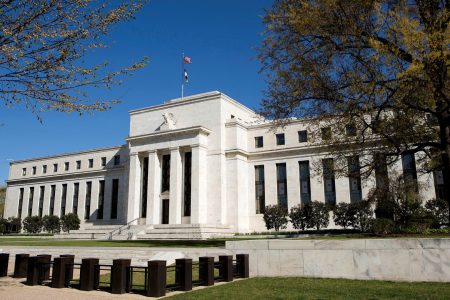The Federal Reserve Building in Washington, D.C.
Joshua Roberts | Reuters
The Federal Reserve announced Thursday that it will lower its benchmark rate by a quarter point, or 25 basis points, less than two days after President-elect Donald Trump won the 2024 election.
Economic uncertainty was a prevailing mood heading into Election Day after a prolonged period of high inflation left many Americans struggling to afford the cost of living.
But recent economic data indicates that inflation has been falling back toward the Fed’s 2% target, which paved the way for the central bank to trim rates this fall. Thursday’s cut is the second, following a half-point reduction Sept. 18.
The federal funds rate sets overnight borrowing costs for banks but also influences consumer borrowing costs.
More from Personal Finance:
28% of credit card users are paying off last year’s holiday debt
Holiday shoppers plan to spend more while taking on debt
2 in 5 cardholders have maxed out a credit card or come close
Since the central bank last met, the personal consumption expenditures price index — the Fed’s preferred inflation gauge — showed a rise of just 2.1% year over year.
Even though the central bank operates independently of the White House, Trump has been lobbying for the Fed to bring rates down.
For consumers struggling under the weight of high borrowing costs after a string of 11 rate increases between March 2022 and July 2023, this move comes as good news — although it may still be a while before lower rates noticeably affect household budgets.
“The Fed raised rates from the equivalent of the ground floor to the 53rd floor of a skyscraper, now they are on the 47th floor and another rate cut will take us to the 45th floor — the view is not a whole lot different,” said Greg McBride, chief financial analyst at Bankrate.com.
From credit cards and mortgage rates to auto loans and savings accounts, here’s a look at how a Fed rate cut could begin to affect your finances in the months ahead.
Credit cards
Since most credit cards have a variable rate, there’s a direct connection to the Fed’s benchmark. Because of the central bank’s rate hike cycle, the average credit card rate rose from 16.34% in March 2022 to more than 20% today — near an all-time high.
Annual percentage rates have already started to come down with the Fed’s first rate cut, but not by much.
“Still, these are sky-high rates,” said Matt Schulz, LendingTree’s credit analyst. “While they’ll almost certainly continue to fall in coming months, no one should expect dramatically reduced credit card bills anytime soon.”
Rather than wait for small APR adjustments in the months ahead, the best move for those with credit card debt is to shop around for a better rate, ask your issuer for a lower rate on your current card or snag a 0% balance transfer offer, he said.
“Another rate cut doesn’t change the fact that the best thing people can do to lower interest rates is to take matters into their own hands,” he…
Read More: Federal Reserve cuts rates after election. What that means for you

